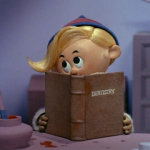Joshua Unruh's Blog, page 4
January 30, 2013
A Tale of Two Camps

Yesterday I had JJ Abrams on the brain so hard I watched Star Trek and thought about rewatching Alias. This morning, I read a fascinating interview with Steven Soderbergh. These two guys got into my head and made me realize something about the fiction I'm enjoying lately. Basically, everything I'm enjoying right now comes from two camps of thought, and these guys can represent them well.
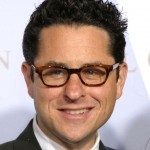 The Abrams Camp
The Abrams CampAbrams makes beautiful movies and tv shows that are pulse pounding and interesting. They're usually pretty smart with well-oiled plots as well. But if it comes down to Smart versus Exciting, Abrams is going to go with Exciting every time.
He considers himself to walk in Spielberg's footsteps. The craft of movie-making will be in full effect, but these movies are here to make you eat the living hell out of some popcorn.
For examples, watch the first season of Lost and Alias, 2009's Star Trek, or Super8.
 The Soderbergh Camp
The Soderbergh CampThe Soderbergh Camp is just as likely to give you a low-fi indie thing as it is to give you a slick, exciting film that makes you eat popcorn by the handful. But even when it's giving you slick and exciting, there's more going on there. Sometimes the craft slips or becomes a little rote, but there's always a lot of thinking and character work going on beneath the surface.
Bottom line, even when the Soderbergh Camp makes pulp entertainment, it's always doing something else beneath the pulp.
For examples, Sex, Lies, & Videotape, Out of Sight, Ocean's 11, or The Good German.
No Judgment Zone
These descriptions should not be read as value judgments. Remember, I led with saying these are the two camps I'm enjoying these days. Not necessarily everything from both camps tickles my fancy (sometimes slick and exciting is also stupid and sometimes multi-layered is just muddying up the better bits), but these are the generalized approaches I love.
Figuring this out, or at least putting names to it, has already helped me understand some of the issues I've had with my creative endeavors lately. Basically, I've left myself in a really confusing place.
 The Unruh Camp?
The Unruh Camp?If you ask me what camp my work is in, I'd say the Abrams Camp. But the fact of the matter is, when it comes to my work habits and the way I plan my fiction, I write as though I'm from the Soderbergh Camp.
Even if I have a thrilling story half planned, I often find it difficult to explain my Story Question succinctly. As much as I love plot driven pieces, I often start with a theme, a feeling, or a character who needs twisting and then create a plot to get at that.
Basically, I really and firmly believe I want to be one thing until I actually have to do the work, and then I realize I have to be the other thing in order to finish the work. But when it's finished, you could very likely mistake it for the first thing.
I can think of one writer -- a comic book writer, of all things -- who manages to synthesize these camps nearly perfectly. Maybe that's what I'm working towards. Or maybe I'm just figuring myself out as a writer on the job. (The best way to figure it out, by the way.)
What about you folks who have read a few things by me? Do you have any thoughts or theories on which Camp I trend toward? Maybe you see neither one? I'd be interested to hear from you guys on this, because if I actually stopped to gaze at my own navel that hard, I might never come out again.
January 28, 2013
Because Nobody Asked Me: What Do I Think about JJ Abrams on Star Wars?

 Very recently, a friend brought it to my attention that it had been a month since I posted to the blog. I've been writing mad posts, but admittedly for another blog. And that's only the beginning of the neglect here. Still, as a guy who really cares about popular culture and genre fiction done well, I'm going to shortly weigh in on the burning nerd question of the moment...
Very recently, a friend brought it to my attention that it had been a month since I posted to the blog. I've been writing mad posts, but admittedly for another blog. And that's only the beginning of the neglect here. Still, as a guy who really cares about popular culture and genre fiction done well, I'm going to shortly weigh in on the burning nerd question of the moment...
How do I feel about JJ Abrams on a Star Wars movie?
The more interesting thing to me is the irony of Disney, the creator of our copyright problems, taking a beloved piece of pop cultural landscape and opening it up to the world for reimagining and reinvention in a way its creator only had minor interest in.
But as far as JJ, my thoughts boil down to two things.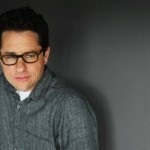
I'm a huge Star Trek fan and JJ's reboot/reimagining is the best thing since Original Flavor. It gave me back the thing Star Trek had been missing since Original Flavor turned into movies about saving whales and The Next Generation let nonsense words take over for good writing. Excitement.
Star Wars sure as hell can't get any worse.
December 26, 2012
Review: The Hammer and The Blade (Novel)

A while ago, I said I'd do reviews only when I read something I really enjoyed or that really caught my attention. That happened the last couple weeks with The Hammer and the Blade, although some of the reasons it caught my attention are because of its publisher, Angry Robot. I'll try and explain all that, why you might enjoy the book, and why the ending sorta made me cringe twice. Hopefully it'll take less than a thousand words.
 First, a bit about Angry Robot just to get it out of the way and because what I have to say is fair to me as a reader but not necessarily to any one novel.
First, a bit about Angry Robot just to get it out of the way and because what I have to say is fair to me as a reader but not necessarily to any one novel.
This is probably the seventh or eight Angry Robot published novel I've read. I have found almost all of them disappointing and several of them frustrating. The reason for this is also the reason I really appreciate Angry Robot.
You see, Angry Robot gives first-time novelists with very clever ideas and enjoyable plots a shot at getting published. But as near as I can tell, Angry Robot does not story edit these first-time novelists. Which leads to clever ideas and enjoyable plots getting mired in rookie mistakes. Hence the disappointment and frustration.
Now, before anybody thinks I'm getting too uppity about my own work, the reason I recognize these obvious rookie mistakes is because they're mistakes I keep making. The difference is, my publisher also prides itself on being a school and my rookie mistakes get caught, I get coached through them, and they don't (usually) make it into publication.
So, that said, I am equally in love with Angry Robot and want to throttle them with my bare hands.
But then my good friend Jeff (source of most of my Angry Robot reading) loaned me The Hammer and The Blade by Paul S. Kemp. Jeff knew that I hadn't read much of Fritz Leiber's Fafhrd and the Gray Mouser, but that I'd loved what I had read. He described Egil and Nix, the protagonists of The Hammer and The Blade, as Leiber on methamphetamine. In addition, this was not Kemp's first novel, so I hoped to avoid the usual Angry Robot issues. How could I not read it?
And reading it was a very good decision. The characters, from the protagonists through the jerk who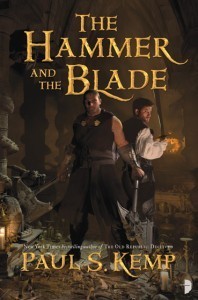 helps kidnap them and on down to the villain and his sisters, are vivid and interesting. The wit is sardonic and sarcastic without growing too quippy. The plot is fast-paced. Lastly, the worldbuilding is dexterous by dangling interesting bits of entertaining information that -- and this is a rare gem in fantasy novels -- leave me wanting to know more rather than bogged down in details.
helps kidnap them and on down to the villain and his sisters, are vivid and interesting. The wit is sardonic and sarcastic without growing too quippy. The plot is fast-paced. Lastly, the worldbuilding is dexterous by dangling interesting bits of entertaining information that -- and this is a rare gem in fantasy novels -- leave me wanting to know more rather than bogged down in details.
No, seriously. Egil worships a guy who is the Momentary God...as in, he was only a god for a moment. Dur Fallin is a city with ten thousand of its own stories. Hell, just the bar that Egil and Nix buy, The Slick Tunnel, seems to have all kinds of story potential. Affiron, the Egypt/Stygia stand-in, is evocative and useful without being overbearing. The mysterious pasts of our protagonists that are only hinted at could be reams of "Untold Tales of Egil and Nix."
So, that's all the good news. And make no mistake, it IS good news. But there are a few rough patches mixed in this story as well. For instance, if you're looking for literature, look elsewhere. This is the fantasy equivalent of your Die Hards and Lethal Weapons. You'll note, this isn't really a complaint to me, I'm just being upfront. I've had all the literary fantasy (or pretenders to pretension) I can stand.
The real hang up, for me, comes very near the end. I'm going to be careful about spoilers, but there are several things you know right from the beginning that I'm not giving away. First of those, rape is the lynchpin of the main villain's plan. Second, it's rape of his usually drugged sisters by a demon lord. Third, rape of their women by demons is pretty much the cornerstone of this douche bag family's power.
Okay, that said, that's not the thing that bothered me. He's a villain and a bastard and his plan gets the point across. There's even some rape imagery in how he compels Egil and Nix. The real problem is when the vileness of rape as a subtext becomes ham-fisted RAPE IS BAD text. There are even all caps in the book.
The inelegance of this became especially difficult for me when I recalled the many scenes with the prostitutes at the beginning of the novel. These ladies were smart and interesting characters who apparently didn't begrudge their lot in life. But if Mr. Kemp wants me to believe that they chose that job while rejecting many other lucrative offers, that's pretty much impossible to swallow. And it make his uncomplicated "rape is bad" text unnecessarily murky.
What's more -- and here is where spoilers would abound so pardon while I'm circumspect -- the denouement of the story is simultaneously very clever while also leaving me uncomfortably unsure what I'm to do with the "rape is bad" mantra.
To sum up, I enjoyed this book and I'd suggest it to other fans of sword and sorcery fantasy. It was a fun read with very engaging characters and teasingly clever world building. The ending, while clumsy and problematic, did not at all ruin the overall enjoyment of the novel. Angry Robot dodged the "first time novelist" issue and they keep both the paperback and the e-book versions reasonably price. You can see for yourself here.
Hey! Look at that! I reviewed a publisher and a book and still didn't quite break a thousand words. I'm calling that a win.
December 24, 2012
The Next Big Thing

The lovely and bossy Laurie Laliberte asked if I'd like to talk about my next project as part of a chain blog thing. Even before she explained I'd get good luck and probably some kickback from a deposed Nigerian prince, I said yes. I mean, I'm an egotist, so I barely need an excuse to talk about my stuff.
And since it's Christmas Eve, we'll just call this you lucky readers' Christmas present.
I have just done the blog equivalent of giving everyone a picture of myself. I couldn't be happier. Now, on with the show!
What is the title of your next book?
I'm not actually working on a novel at the moment. Most of that is because I'm working on a series of novellas that bridge the gap between Aaron Pogue's second and third books in The Dragonprince Trilogy. The series of novellas are under the heading Tales of the Dragonriders and my particular offerings will be (in order of publication and internal chronology) The Abyss, The Dragonprince's Shadow, and A Dragonrider of the Tower?.
Where did the idea come from for the book?
Aaron has a lot of fans. He also has a lot of Dragonswarm story ideas. He wanted to do these tales of Daven's elite Dragonriders, but he didn't want to do them all himself. I want some of his fans to look at my stuff, so I volunteered. Plus, and this is not (just) ego talking: I take Aaron's already exciting plots and make them freakin' sing.
The short version of that is "Aaron handed me a bunch of plots and told me to figure out how to make them into a story."
What genre does your book fall under?
I'm not sure what Aaron would call them, but I'd say they're Epic Fantasy concepts wrapped up in Adventure Fantasy storytelling.
What actors would you choose to play the part of your characters in a movie rendition?
I think Caleb was in Aaron's head as Michale Clarke Duncan until his untimely demise this year. Lareth the insane wizard with a weird sense of humor makes me think of Johnny Depp. Channing Tatum would make a pretty great Jaicin. Garrett Dain should be Idris Elba and Kemmas Raug should be Wood Harris, but that might just be because I'm in love with The Wire.
What is the one sentence synopsis of your book?
Well, since we're actually talking some novellas that go between two books, this might be difficult. Let's go with "Between Daven's war with the Dragonswarm and his son Taryn's difficulties with the king, there were...Tales of the Dragonriders!"
Will your book be self-published or represented by an agency?
Split the difference! I will be published by indie publisher extraordinaire Consortium Books.
How long did it take you to write the first draft of the manuscript?
Months, but it seems like YEARS AND YEARS. It is an interesting problem turning plots into stories in a world to which you don't know all the rules, especially when the creator of that world has everything around your story thought out in annoying detail.
What other books would you compare this story to within your genre?
This is another weird question for me. I'd like to say The Dragonprince Trilogy but these are going to read very differently than the main books, although I think they'll be just as satisfying to the fans. They don't really read like my own stuff though either.
Let's go with "They're like R.A. Salvatore and Robert Jordan had a love child who avoided the excesses of both her fathers."
Who or what inspired you to write this book?
A grand idea by Aaron combined with pure, unadulterated avarice on my part.
What else about your book might pique the reader’s interest?
I've never really collaborated like this before and the output from it is absolutely fascinating to me. The ideas behind these stories are pure Aaron, but the executions could not be more different than what he'd do.
So if seeing two very different authors come together on a bunch of novellas isn't interesting to you, then I don't think we're even playing in the same ballpark of what sounds cool. Or the same league. Possible not the same sport.
Okay, them's the questions! I think I'll tag Aaron Pogue since he's already linked up there and I'd be interested to hear what he thinks about these things. I'll tag Courtney Cantrell since I just hit the Publish button on her latest piece and she'll want to chat about that. Also, fellow Consortium author and head editor, Jessie Sanders is doing a Dragonrider novella so let's throw her in this pile as well.
I'm a couple short. But I'll keep thinking and if I come up with another couple authors I know and who will want to take part, I'll update it with their links as well.
December 21, 2012
Draft2Digital.com Will Straight Up Change Your Life (If You’re a Self or Indie Pubbed Author)

 Do I have your attention now, self-, indie-, and small press published authors? If not, this is important enough for me to pander so I'll put this link to Hot Guys Reading Books and Babes With Books right here because I love you and want your attention. When that's done, come back and we'll talk serious.
Do I have your attention now, self-, indie-, and small press published authors? If not, this is important enough for me to pander so I'll put this link to Hot Guys Reading Books and Babes With Books right here because I love you and want your attention. When that's done, come back and we'll talk serious.
You back? Good! Sorry about the photo of Paris Hilton, I have no idea how that got in there since she isn't hot and staring at books isn't reading. Anyway, let's talk about Draft2Digital.com, the new masters of easy, digital publishing.
I work for and am published by an indie small press publisher. As the marketing guy for The Consortium, I am intimately involved in a lot of the details of creating attractive and exciting novels. At the same time, a whole slew of work happens behind the scenes to get my books and stories out into the world that I am only kind of aware of. In fact, most of my awareness comes from complaining and exasperated or frustrated sighs from the folks that handle the formatting for my e-books and paperbacks.
For a while, I didn't really think about it. But the more invested I become in self and indie pub culture, the more I came to realize just how lucky I had been to find myself working for and with a publisher so committed to ridiculously high quality and amazingly pretty formatting. The same, or more usually, much lesser, formatting costs other writers lots and lots of money even if they don't get scammed along the way.
So here's where the life change happens, fellow scribes. Draft2Digital.com will give you the same tremendously high level of quality formatting in both e-book and paperback at no upfront cost to you.
Let that sink in. Ultra high quality professional level book formatting -- across multiple e-reader platforms, I might add -- with no out-of-pocket expense. If that doesn't get you excited, then you have either been as lucky as I have been or are actually deceased.
What's more, it's really, really easy. I ran a novella of mine through the grinder in about ten minutes and it came out BEAUTIFULLY. That ten minutes included making an About the Author page (I just cribbed it from my Amazon bio, including the picture since I wasn't at home) and spitting out some marketing copy (granted, I do marketing copy a lot so your mileage will assuredly vary in this area).
I'd be willing to bet the next time I did it, it would take about five minutes.
And if I ever want to make changes, any changes at all, either to the manuscript or any of the information attached to it (Author Bio, Also By, Teasers for other books, price changes, whatever), I only have to do that once on D2D and it disseminates it to all the major sales channels.
I make changes to a singular site rather than making that change on Amazon, on Barnes & Noble, on iBooks, and on Kobo. The more books you publish, the more of a time saver that becomes, guys.
Oh, why didn't I mention Smashwords? Because Smashwords is a necessary evil that just found itself entirely unnecessary. You heard it here first.
And now the last and coolest bit. You know all that super cool sales information all those different sales channels are collecting for you? How many copies sold in electronic and paperback, rank in sales, star and reviews, and the rest of it? D2D aggregates all that in one dashboard. They are literally a one-stop web portal to manage your growing publishing empire.
Here's the one caveat. Draft2Digital.com is currently in beta, so there are some wrinkles to smooth. But if you were a wise person, you'd go take part in that beta and help them do the smoothing. Because once the launch starts, you'll be ahead of the "changing your life for the better" curve. Now quit messing around and go sign up before they run out of slots!
December 20, 2012
Apocalypse What Now?

 I wrote a humorous article over at PolicyMic about the so-called Mayan Apocalypse and why we should be interested but totally not freaking out. Go check it out and share it around a little bit, will ya?
I wrote a humorous article over at PolicyMic about the so-called Mayan Apocalypse and why we should be interested but totally not freaking out. Go check it out and share it around a little bit, will ya?
December 14, 2012
Just what the HELL is going on with Rudolph the Red-Nosed Reindeer?!

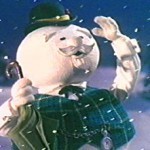 As an adult who grew up in the 80s, I regularly have the joy of reintroduction to a barely remembered treat from my childhood that turns out to be full of darkness and horror. This year, that reintroduction was Rankin & Bass's stop motion animated masterpiece, Rudolph the Red-Nosed Reindeer.
As an adult who grew up in the 80s, I regularly have the joy of reintroduction to a barely remembered treat from my childhood that turns out to be full of darkness and horror. This year, that reintroduction was Rankin & Bass's stop motion animated masterpiece, Rudolph the Red-Nosed Reindeer.
I have a five year old son and seeing things anew through his eyes can be a real treasure. For instance, even after the Star Wars prequels stole my give-a-damn for that franchise, watching the original trilogy with him managed to make my grinchy heart grow at least one size larger. But in the case of Rudolph, imagining what it was his little eyes and ears saw and heard dug out a pit inside me. A pit filled with existential dread...and misfit toys.
If you haven't seen this monstrosity recently, my mother tells me it's on CBS tonight at 7pm. If you burst into inconsolable tears, don't blame me.
This thing is wall-to-wall horrors for the modern audience. Although, honestly, I'm beginning to wonder how it ever passed muster even back in the day. I don't have the time nor do I have the mental capacity to dissect this thing minute by minute. I plan to hit the high points and hope they suffice as explanation why this will not be seen in my house EVER AGAIN.
Rudolph's dad starts out super excited about having a baby boy, gets a little shaky on it when the nose starts glowing, and then outright sees Rudolph as a problem to solve once Santa pipes up.
For most of his life, Rudoph is not loved unconditionally by his father. Which sorta leads me, as a dad, to ask if he's loved at all.
This mistreatment continues when Rudolph's nose is revealed to the other young reindeer and everyone "laughs and calls him names." Nobody is punished or admonished for this, not even in a bid for pity.
The only reindeer who is nice to Rudolph is Clarice, a female yearling, and her dad forbids her to see him. There is no comeuppance. (Note: It could be argued that Rudolph's mom is also nice to him, but then again, she fails to protect him from his father's douche baggery.)
Santa apparently thinks the snow at the North Pole isn't the only thing that needs to be pure white. He consigns Rudolph to the
 reindeer purgatory of "not being on the sleigh team" and also banishes (perhaps via intermediaries, but still, he is the autocrat of the North Pole, isn't he?) broken or "misfit" toys to a concentration camp.
reindeer purgatory of "not being on the sleigh team" and also banishes (perhaps via intermediaries, but still, he is the autocrat of the North Pole, isn't he?) broken or "misfit" toys to a concentration camp.When Rudolph is welcomed back into the fold, it is not because everyone suddenly realizes they were douche canoes to him in the first place. It is explicitly because his "deformity" is now useful.
There is no shame felt by anyone who mistreated him.
There are no life lessons learned about how different doesn't mean bad.
It's like Rankin & Bass asked the question "Why make a show about bullying when we can make a show about state sanctioned bullying and why it might be kinda okay"? This thing isn't just a poorly made or stupidly juvenile piece of yuletide drivel, it is an actual Christmas Spirit Killer.
Hermie is a "misfit elf" who doesn't want to make toys. No, Hermie wants to be a dentist! Of course, because this is a film about the inherent horrors of deviating from a blessed, state-sanctioned norm, Hermie is ridiculed for his desire that all elves have healthy teeth and gums. And, because we need a couple of guys who can go on a road trip together and discover that their deformities aren't the only ones that will get you kicked out of Christmas Town by that fat fascist bastard Santa, Hermie runs into Rudolph when he's on the lam as well.
They go off on their own, have adventures, meet Yukon Cornelius, and run like hell from the Abominable Snow Monster. Through all this they forge a mighty and lasting friendship.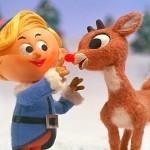
But here's where things get a little weird. It is abundantly clear to me (and to every other adult I mention this to, by the way), that Hermie is gay as a picnic basket and "dentistry" is a euphemism for homosexual sex.
Yes, really.
Just take a look at Hermie. All the other elves are uniform and, frankly, hideous little gnomes. But Hermie is absolutely fabulous! His face is cherubic, his hair perfectly coiffed, his voice has just a hint of a lilting lisp. Plus, and this is pretty key, his focus on dentists and becoming one borders on the pathological. Nobody, and I mean nobody, is that excited about teeth. Of course he demands -- while bursting into song, I might add -- "why must I be a misfit?"
Did I mention our nearly first brush with Santa was him singing a number where he declared himself the "King of Ding-a-ling"? My God, the hypocrisy of the North Pole.
 "You don't mind my red nose?" Rudolph asks. "Not if you don't mind me being a dentist," Hermie responds. Later, Rudoph insists to Hermie, "Whatever a dentist is, I hope someday you're the greatest." See how caring Rudolph is? He even wants good things for Hermie's first boyfriend.
"You don't mind my red nose?" Rudolph asks. "Not if you don't mind me being a dentist," Hermie responds. Later, Rudoph insists to Hermie, "Whatever a dentist is, I hope someday you're the greatest." See how caring Rudolph is? He even wants good things for Hermie's first boyfriend.
Honestly, just assuming that every naive mention of dentistry and dentists is actually referencing gay men almost salvages this thing enough to be watchable. But just to prove that no part of this monstrosity can be entirely uplifting and uncreepy, Rankin and Bass give us a scene between Hermie and the Abominable Snow Monster. The Bumble, as he's eventually called, is knocked out, whereupon Hermie perpetrates dentistry on him against his will.
When the Bumble wakes up from his roofie-induced brush with "dentistry," he is toothless and there is -- I shit you not -- blood splattered snow. As my friend Hill said during the Facebook conversation I accidentally started with my musings, "The yeti emerges completely toothless-- all gums. I could take the innuendo further, gentlemen, but I am not sure you want me to."
No, my friend, we do not.
The most amazing part of all this is that none of my observations involve much reaching. This is all pretty much text. Even the "dentistry" angle is so thinly veiled as to be a winking joke with the audience. This is not adult eyes focused on a beloved childhood masterpiece. This is calling an awful thing awful...and maybe also wanting to high five Hermie. (No that's not a euphemism. Pervs.)
So for the parents and grandparents out there who haven't seen this thing in decades and think it would be a nice night at home with the kids, think again! Look upon this image...and shudder.
November 27, 2012
Bitter-SWEETS

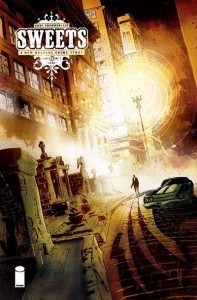 I recently had the pleasure of meeting Kody Chamberlain. He's a friend of my friend, Brian Winkeler, who had invited Kody to OKC to talk to our AdClub. Brian was cool enough to make me his +1. Kody's talk on the creative process was very enlightening and has caused me to tweak my own process. Not only that, but I've taken some very tentative steps toward an all new project that would never have occurred to me without our lunchtime conversation we had before the presentation even started.
I recently had the pleasure of meeting Kody Chamberlain. He's a friend of my friend, Brian Winkeler, who had invited Kody to OKC to talk to our AdClub. Brian was cool enough to make me his +1. Kody's talk on the creative process was very enlightening and has caused me to tweak my own process. Not only that, but I've taken some very tentative steps toward an all new project that would never have occurred to me without our lunchtime conversation we had before the presentation even started.
But the most immediate discovery was Kody's creator-owned comic book series, SWEETS. To my friends who know my fiction predilections, picking this up was a no-brainer. SWEETS is a cop procedural set in New Orleans mere days before Katrina will hit. There have been murders, it's starting to look like a serial killer, and the best guy for the job is mourning his daughter (dead from a hit-and-run) in a way that's going to get him fired. On top of all that, Katrina is blowing down their necks and promising to obliterate evidence and lose witnesses to the winds.
Before I say anything else, I have to praise the artwork in this book. Kody is a veteran of graphic design as well as comic book art and it absolutely shows. Kody mentioned in his AdClub talk that, because of his roots in commercial arts other than comic books, he has several different styles in his repertoire. It absolutely shows.
The A Plot is purposefully muddy colors and fake ink splatters to show a very real world approach to the police work. To show the 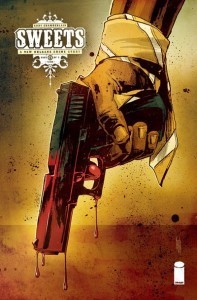 killer's viewpoint, Kody drains the color from that style and adds some other oddball touches that demonstrate just how skewed the killer sees things. On top of this primary style (with tweaks), there are flashbacks done in a cartoonish style with a more vivid but still very muted color scheme. You always know exactly what part of the story you're looking at literally at a glance.
killer's viewpoint, Kody drains the color from that style and adds some other oddball touches that demonstrate just how skewed the killer sees things. On top of this primary style (with tweaks), there are flashbacks done in a cartoonish style with a more vivid but still very muted color scheme. You always know exactly what part of the story you're looking at literally at a glance.
Considering I have recently read superhero books where I could not figure out what was happening from one panel to the next, I find this incredibly impressive.
So all this beautiful, engaging art is used to tell a sordid tale of serial killings, mysteries, psychic madams, grief, dealing badly with the grief, working the murders like cops, shady deals all around, and some amazingly well written dialogue. The art from an industry veteran is stunning and it is an incredible effort from a debut writer.
Basically, I couldn't suggest it more. Go buy it now!
November 6, 2012
Everything I Need to Know about Elections I Learned in Kindergarten (This Morning)

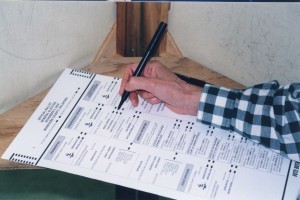 This morning I had the distinct pleasure of assisting my son's kindergarten class with taking part in the entire school's mock election. It was mostly humorous, a little sad, and a very little horrifying. At the end, though, I had to admit that I'd left a kindergarten class a little more educated, although probably not in the way anyone would have preferred.
This morning I had the distinct pleasure of assisting my son's kindergarten class with taking part in the entire school's mock election. It was mostly humorous, a little sad, and a very little horrifying. At the end, though, I had to admit that I'd left a kindergarten class a little more educated, although probably not in the way anyone would have preferred.
First, my son's teacher did a great job of explaining that Americans have the right to take part in their government and one of the main ways is through voting in an election. Then she explained that elections are where each citizen, through their vote, picks which candidate he or she thinks is best for the job.
Now, as a very apolitical and cynical human being, I already thought this was putting a brave face on things. But it was also kindergarten, so I figured starting them out with shining optimism and preserving it as long as possible is the right move. So point to Miss C.
But then one of the kids asked who the candidates were. Miss C. explained the current president was Barack Obama and his main challenger was Mitt Romney. Then the room of 5 and 6 year olds flipped feces.
So many of these kids had deeply held opinions about these candidates and voiced them in the same frantic, high pitched tones they would use to beg for candy or more recess. I couldn't parse any specifics (a fact that saddens me for lost comedic value but heartens me because I don' t know if I could sleep at night knowing there are rabid Republicans and Democrats in kindergarten), but they all boiled down to something like "My [parent] says he [the candidate] is doing [horrible thing] to the country!"
Miss C.'s response to this was a firm and only slightly louder than the children, "WE ARE NOT DISCUSSING WHO WE'RE VOTING FOR. THE SECRET BALLOT IS YOUR RIGHT AS AN AMERICAN." She was so stern, though, that I couldn't help but add in my head, "And also a requirement for this class."
Then she ordered the children to line up, and we marched them down to the polling area. We had to wait a bit for the first graders to finish up, and while we were there, I mused. Between the lining up, the forced march, and the waiting for your turn to vote en mass, I sorta wished I'd brought some small green caps with red stars pinned to them.
Once we entered the polling area, each kid had to check in by saying their name. I thought that was pretty lax security, but, honestly, that's about the height of the bar at actual polling places too. A driver's license? Seriously? I had three or four of those in college, and only one had my actual name on it. You want to make it tough? Have the kindergartner write their full name. That would be the equivalent of a DNA scan on me.
This is when the ballot itself was explained. It's also when I realized that programming our system to fail happens as early as kindergarten by well-meaning and loving people who are doing their best to explain complex things to simple minds. As a person who believes that the thing you're voting on becomes less and less important the further it moves away from you geographically (until you reach the nadir of Washington DC where literally nothing that happens there really matters in a substantive way), it was a true shock to me for the following reasons.
Despite having several judges and very interesting state questions on our ballot, the only things on the mock ballot were presidential candidates and their running mates.
The third party candidates were referred to as "the guys you don't hear as much about."
The pictures of the candidates were photocopies so Obama looked way blacker and everybody else looked way whiter. (I really want to make a joke about how Romney couldn't be whiter, but then you'd think I'd tipped my political hand when, in fact, I mostly just think Romney is a deeply typical rich white guy.)
Here began the most fascinating lessons. Despite the rules against it, there was a lot of loud whispering about who was voting for who and why. There were also several kids who forgot what they were doing halfway through the process. I had to re-explain the whole thing and make sure they checked the box properly. Then each child in turn meandered, a little dazedly, over to the ballot box, dropped their ballots in, and received "I Voted!" stickers.
As they sat with huge, beaming smiles on their faces comparing their stickers, I had an epiphany. They believed utterly that they had just done something of staggering importance by using an ill informed opinion to decide what name to make a mark next to before dropping that opinion into a magical box where somewhere, somehow, that opinion would count for something. They were all immeasureably proud of themselves...for about five minutes. They forgot about the whole thing by the time we made it back to the classroom, and will probably keep on forgetting about it for at least the next four years.
And if that's not a metaphor for the actual grown-up election, I don't know what is.
November 5, 2012
The Point of Bullets

Here's a few things I wanted to let every one know all at once. Sadly, this means some of them that could become blog posts probably won't now, but I don't care because I have lots of opinions to wave around at people.
A random conversation with AaronPoguedid result in my plan to write the first drafts of several fantasy novellas I won't have to do second drafts of because it's Somebody Else's Problem, the first drafts of not one but two fantasy novels (one very fun and low fantasy, the other very serious and high fantasy), and fixing my Weird Western novella finally. I'm going to try and do most of this in about six weeks. The biggest hurdle is how little prewriting I've done on the novels.
This may result in some more silence here, but it may not. We'll just have to see.
I still haven't caught up on Arrow but I really, really want to. Watch this space for more reactions.
The above is brought to you at least in part by the responses to my last blog post. Apparently I can manage to be some sort of bridge between the Nerd Culture that produces Rage over changes to things and the Pop Culture that wants to care about guys in masks punching criminals (for instance) but only on their terms.
BTW, as much as I understand and accept the above, I'm taking suggestions on future topics because right now, other than Arrow, I got nothing.
The Man with the Iron Fists was freakin' AMAZING, you guys. Go and see it. Lovingly crafted Grindhouse Kung Fu Cinema. If you don't love it, I'm not sure we can be friends.
I'm seriously wondering how people have time to watch television. I have a lot of what sounds like quality television I'm really interested in watching, but have no time in which to do it. Yet Big Brother and Honey Boo Boo get audiences. WHO HAS THE TIME FOR CRAP?
Okay, more semi-random musings to come I'm sure. Especially as I pre-write such vastly disparate styles of writing, I bet all kinds of wisdom (or what passes for it around here) drips from my blog like honey from the comb. Also, tomorrow is Election Day in the USA where I live, so if you aren't entirely cynical about the process, go do your civic duty!

